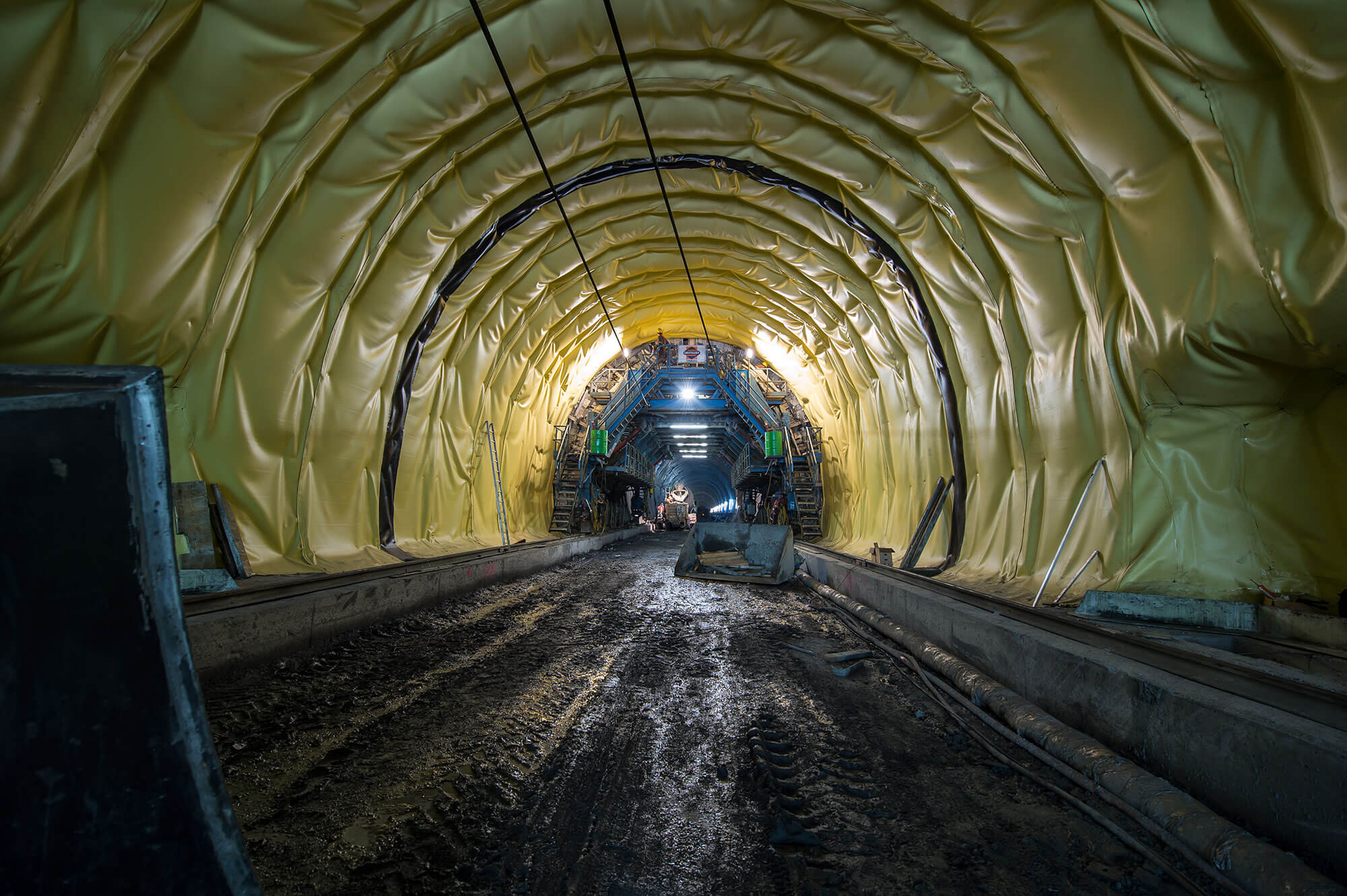
The geography of southern Europe is dominated by mountain ranges such as the Alps and the Pyrenees. Although the mountainous terrain contributes to the outstanding natural beauty, for millennia, it has confounded travelers, often leaving them with no choice but to face arduous and sometimes dangerous journeys around the mountains to reach their destinations.
In the case of the Alps at least, there was an ever-present desire to overcome these difficulties by going through the mountains as opposed to around them. However, even for countries renowned for engineering such as Italy, the task was beyond enormous. Only with advances in drilling technology did the concept of drilling under the Alps become a possibility.
The Brenner Base Tunnel is one such dreamed-of tunnel under the Alps, which now looks like becoming a reality. It passes through one of Europe’s busiest routes, from Innsbruck in Austria to Fortezza in Italy, and when finished, will be the longest underground railway connection in the world. When the opportunity arose to return to the tunnel and check on its progress, Business Excellence simply couldn’t refuse.
No longer a pipe dream
The Brenner Base Tunnel is a joint venture between the governments of Italy and Austria. Construction on the project began in 2008 and significant progress has been made in that time, with weekly updates available on the official project website (www.bbt-se.com). In 2019, there are four construction sites in operation with two in Italy and two in Austria: Tulfes-Pfons, Pfons-Brenner, Mules and the Isarco River Underpass.
The project will have an estimated completion cost of over 8 billion euro, which will be shared between the Austrian and Italian governments. At its deepest, the tunnel will be around 1,600m below the surface and will be nearly 800m above the surface at its highest point - giving some indication of the challenge that faced the engineers on this project. The distance between cross-passage tunnels will be 333m, while the diameter of each of the single track tubes will be 8.1m.
Sections of the tunnel which have already been completed include the emergency tunnel (9.7km in length), the main tunnel (5.9km in length), the connecting tunnels (6.8km in length), the Exploratory tunnel Ahrental-Pfons (15km in length) and the safety and logistics tunnels (3.8km in length). In all, nearly three quarters of the lines have been completed and in early 2019, work was said to have sped up considerably.
When completed in 2026, the impact that the Brenner Base Tunnel will have on logistics in this part of Europe - and beyond - will be massive. By one estimate, a train journey from Munich in the south of Germany to Verona in mid-Italy could be as short as four hours. The journey currently takes around seven hours in total. As one of the most important routes from northern to southern Europe, it is no exaggeration to say that it will change how business is conducted in the region. Underlining this, between 200 and 250 trains will pass through the tunnel every day, with passenger trains traveling at a planned 250km/h and freight at around 160km/h.
Sustainability
To grasp the impact that the tunnel will have in terms of sustainability, one just has to look at the road traffic numbers that currently exist between Innsbruck and Fortezza. Tailbacks as long as 100km - mostly consisting of container trucks - have been reported in the past few years, while over 1 million trucks passed through the section of motorway in 2018, or approximately 40% of all traffic through the Alps. By contrast, the trains traveling the Brenner Base Tunnel will all be electric, significantly diminishing the CO2 impact of cargo and traffic.
Respect for the environment has also been a feature of the construction works. Both governments have independently verified the environmental compatibility of the project on the basis of their respective environmental laws. Likewise, data was gathered on fauna and flora, agriculture and forestry, air and noise pollution as well as the water resources along the Brenner corridor to provide an environmental assessment base for a comparison of conditions before, during and after construction.
Other environmental initiatives undertaken by the project coordinators have included creating homes for bats which were displaced by the construction works, clean water filtration for water used and disposed of, spawning aids for fish along the route, reforestation wherever trees have been felled, and a commitment to use plants wherever possible to minimize the visual impact of the tunnel.
Partners and Suppliers
As one might expect for the largest train for what will be the longest train tunnel in the world when completed, the Brenner Base Tunnel employs partners and suppliers with a variety of technically complex skills.
Clearly, a project like this is one of the most advanced in terms of engineering that Europe has ever seen. A group of carefully selected engineering teams have worked closely together at all stages of the project. This group includes Amberg Engineering, Advanced Microwave Engineering srl, SWS Engineering S.p.A and Applus+ Laboratories.
This group of engineering firms has been required, and been provided with, state of the art drilling and technology. This has mostly been provided by Herrenknecht (Australia) Pty Ltd, and Ripamonti Dr. Gianni s.r.l. Other equipment necessary for the delivery of the project includes breathing equipment - provided by GRUBER Logistics - and of course, a complex array of telecoms equipment, all provided by Brennercom S.pA.
No mountain too high
In a decade when the very existence of the European Union has been questioned, the Brenner Base Tunnel shows the potential of two countries working together as part of a larger goal. Not only is the project remarkable in its ambition, it will also have an immediate and lasting impact on the CO2 output of this area. When delivered in 2026, it is no exaggeration to say that logistics and transport in this part of the world will never be the same again.
DOWNLOAD
 BBT-April2019.pdf
BBT-April2019.pdf














